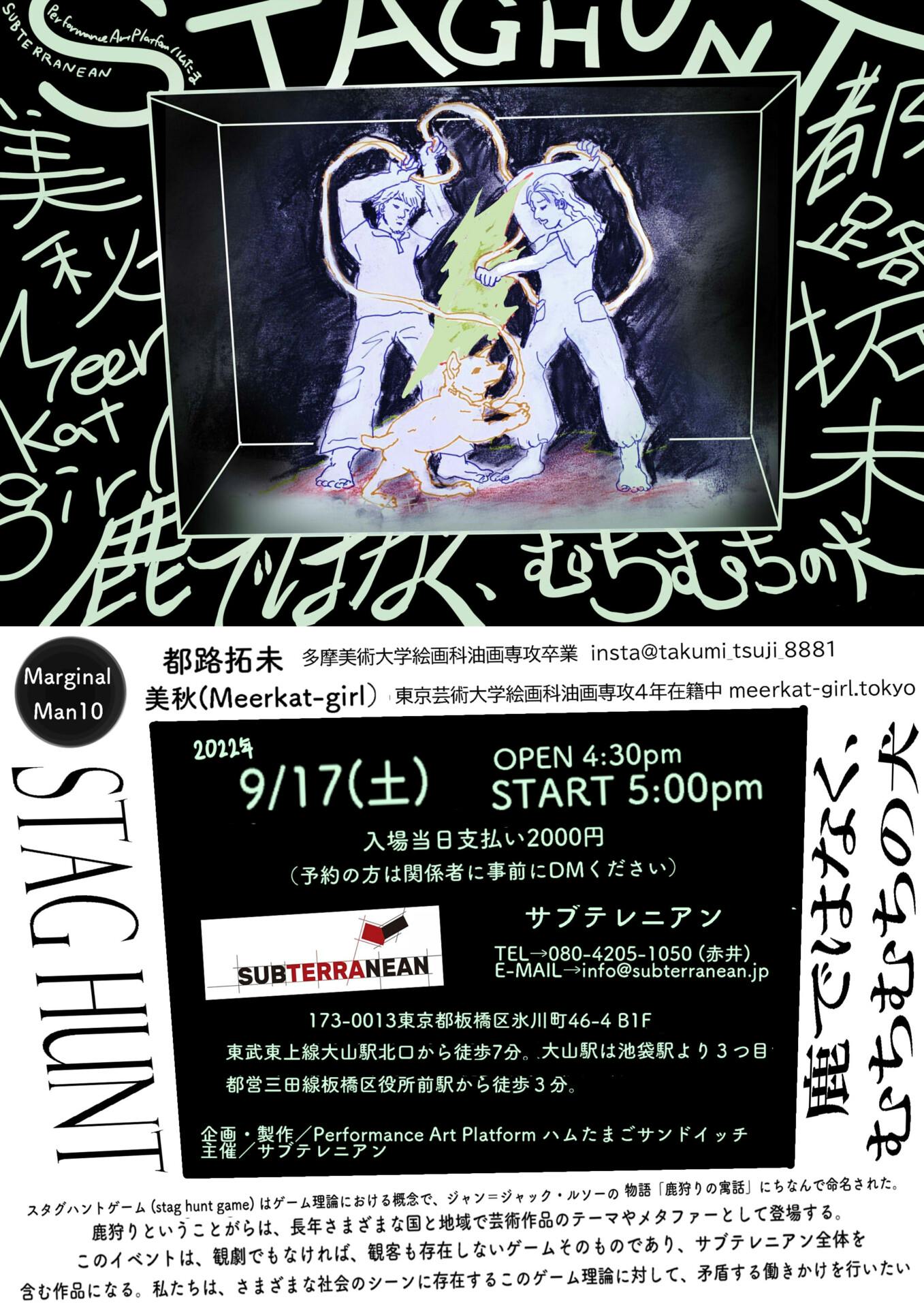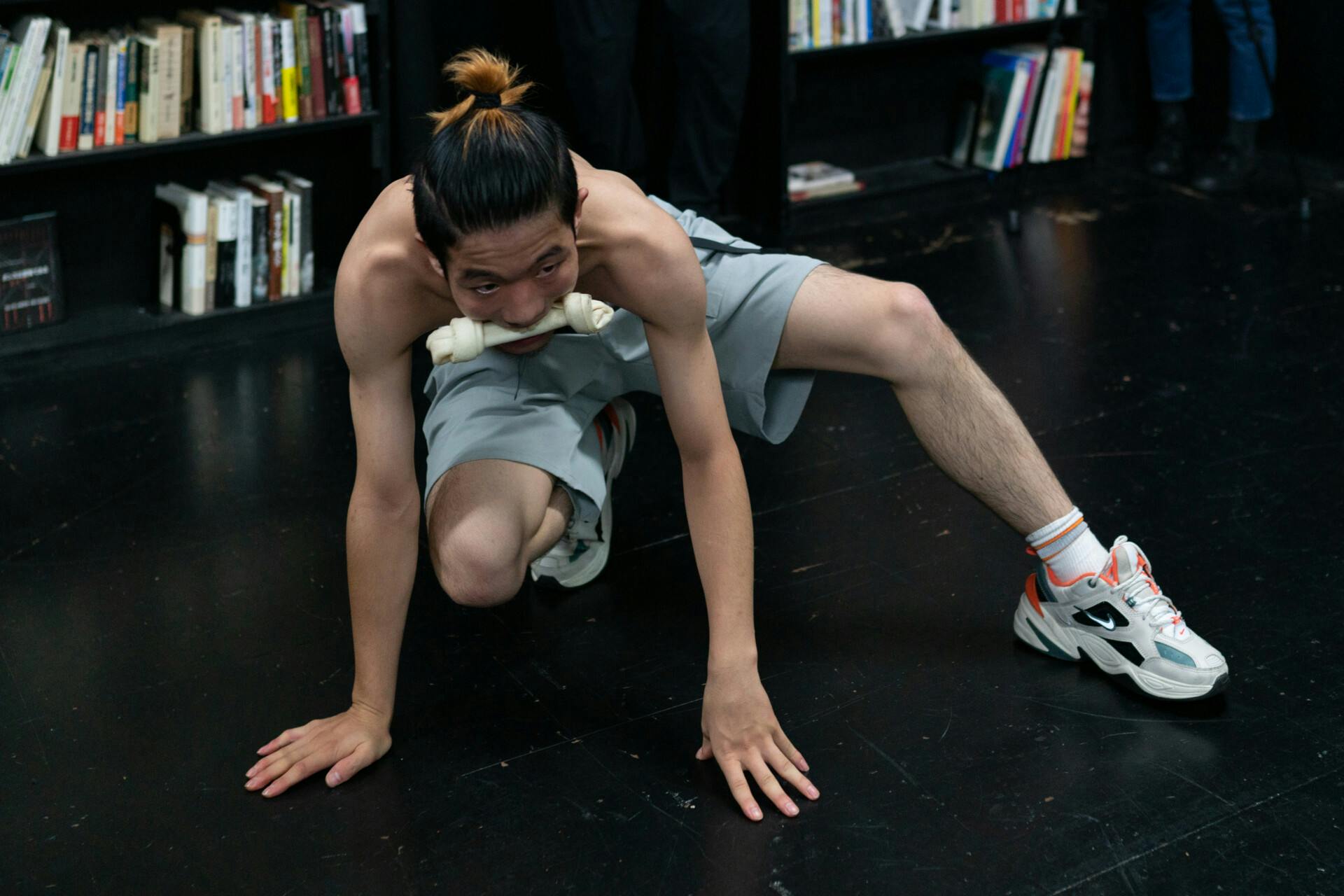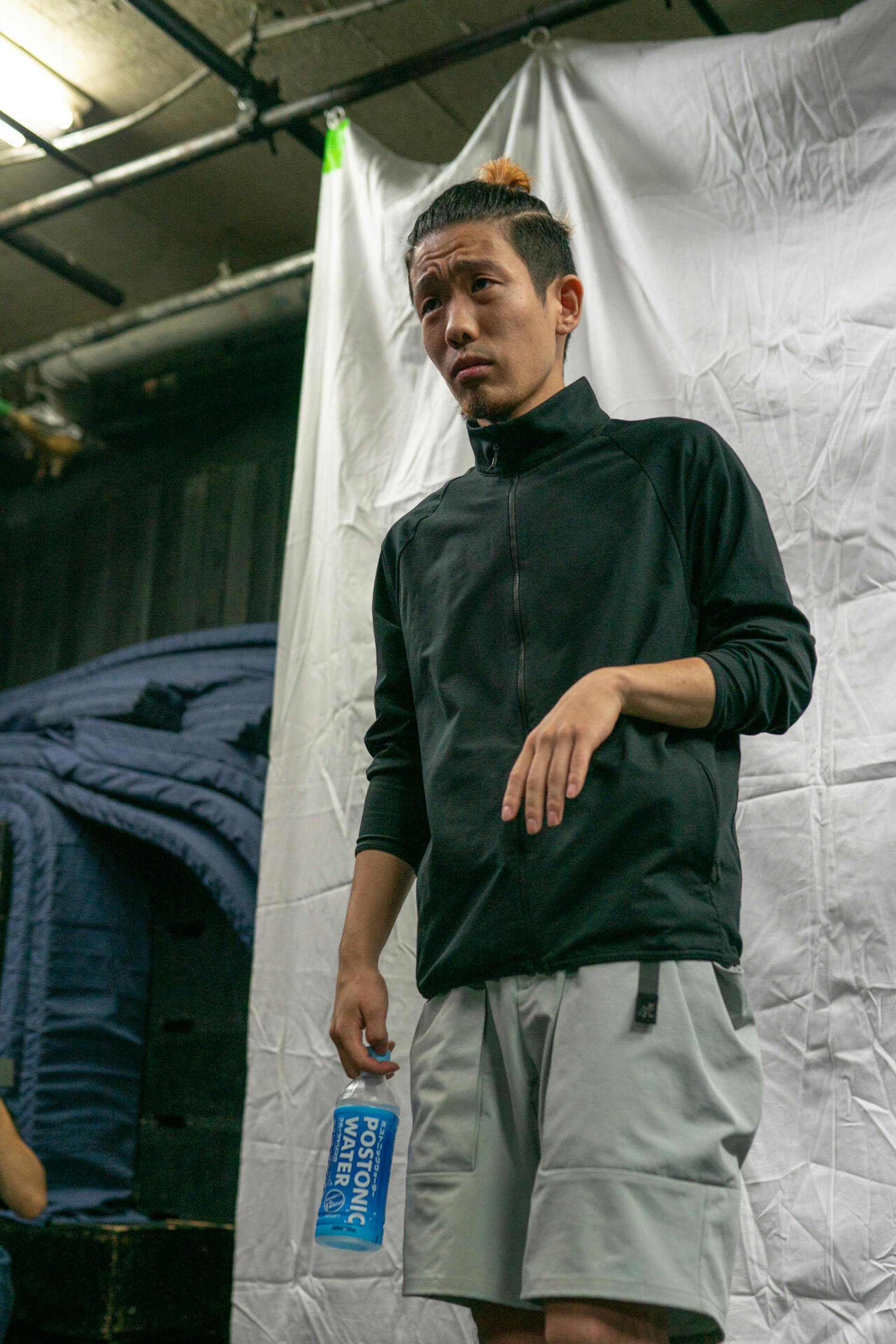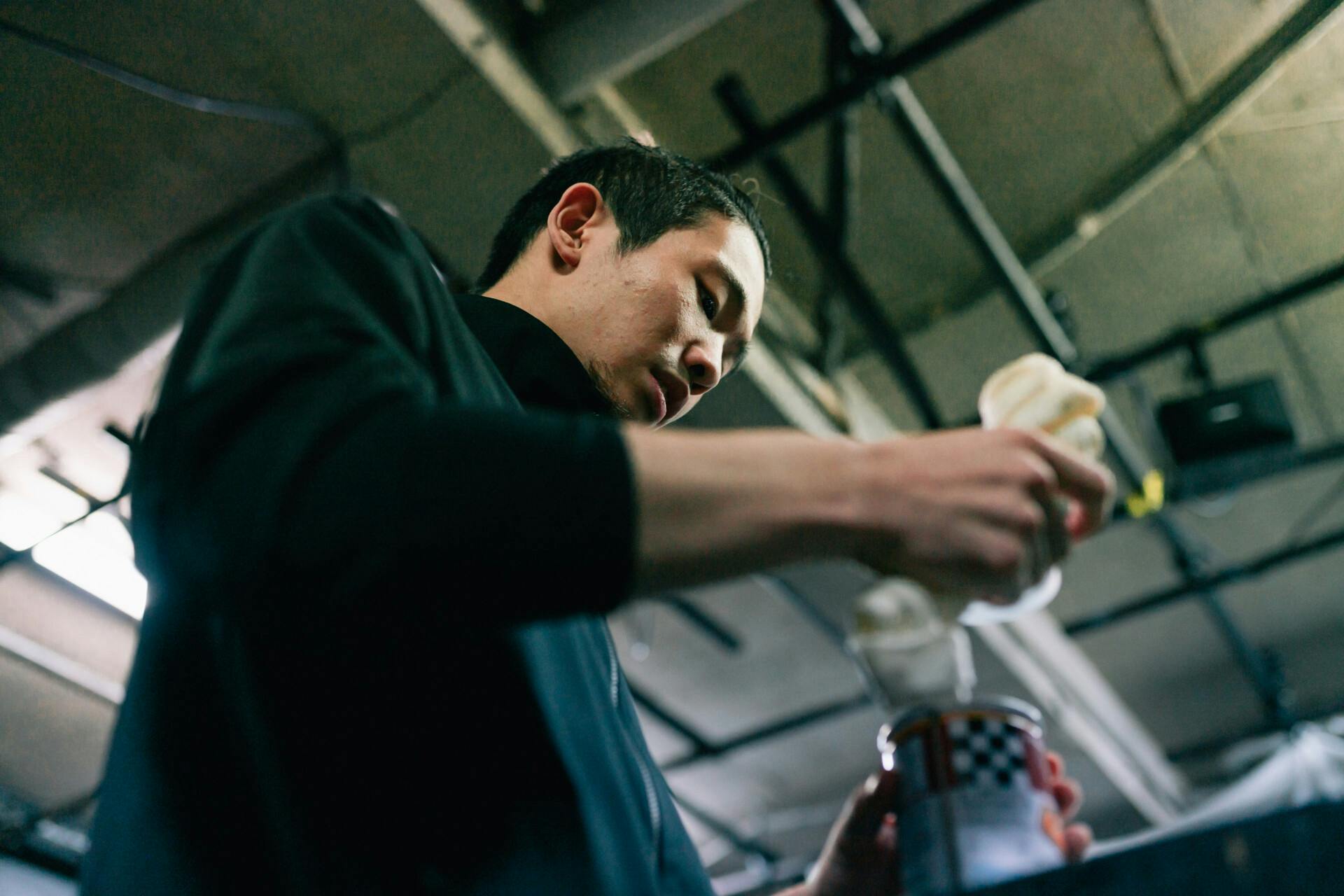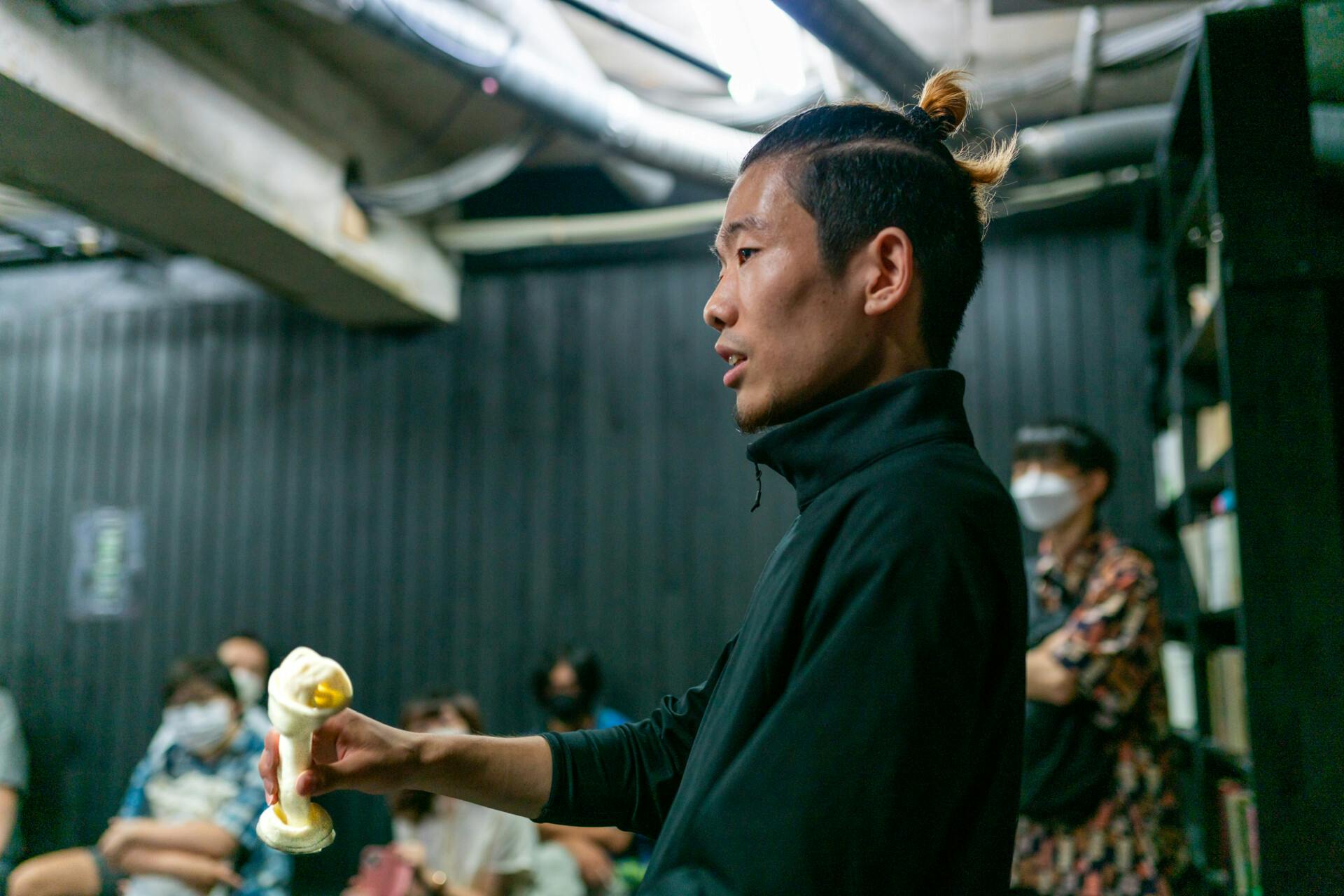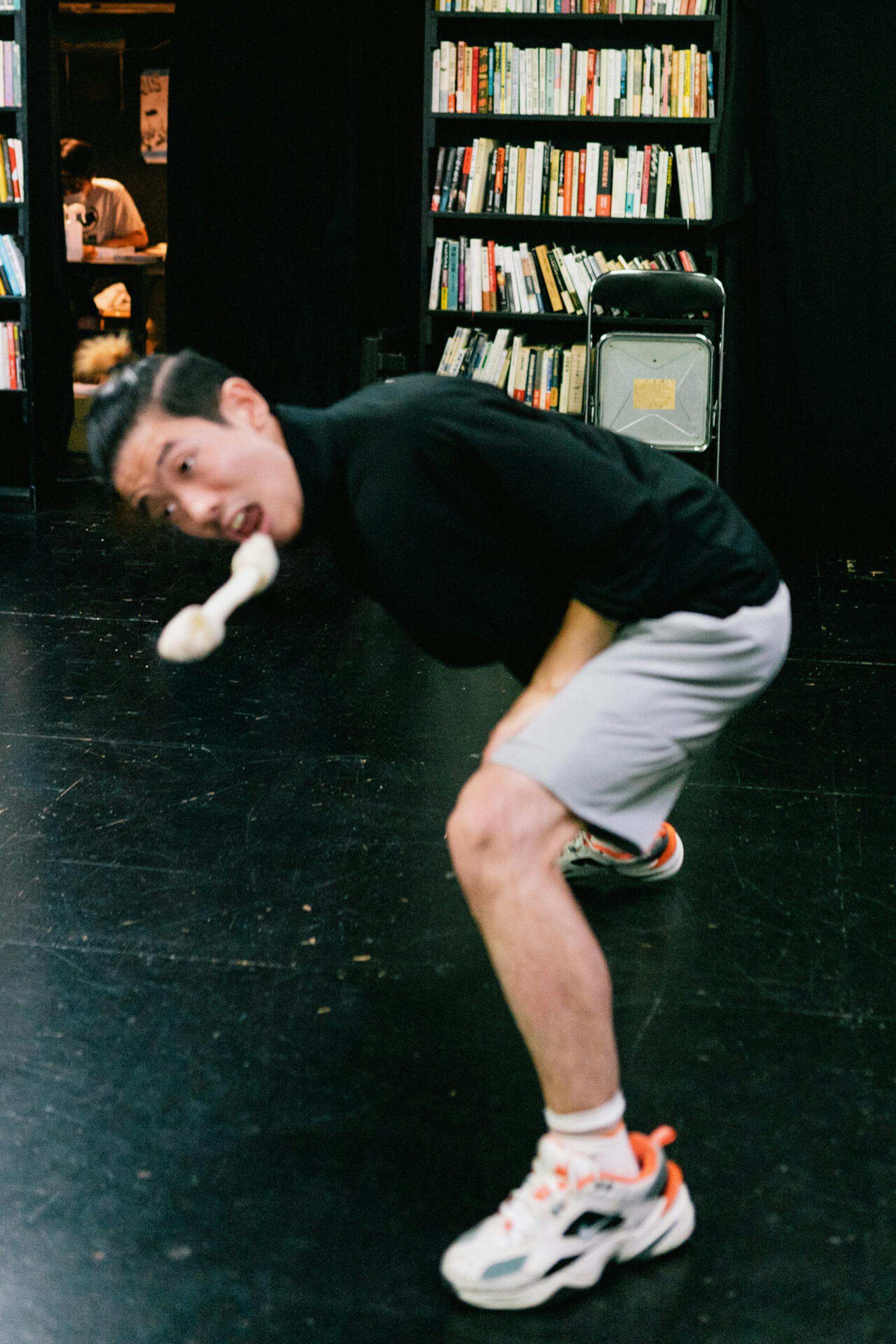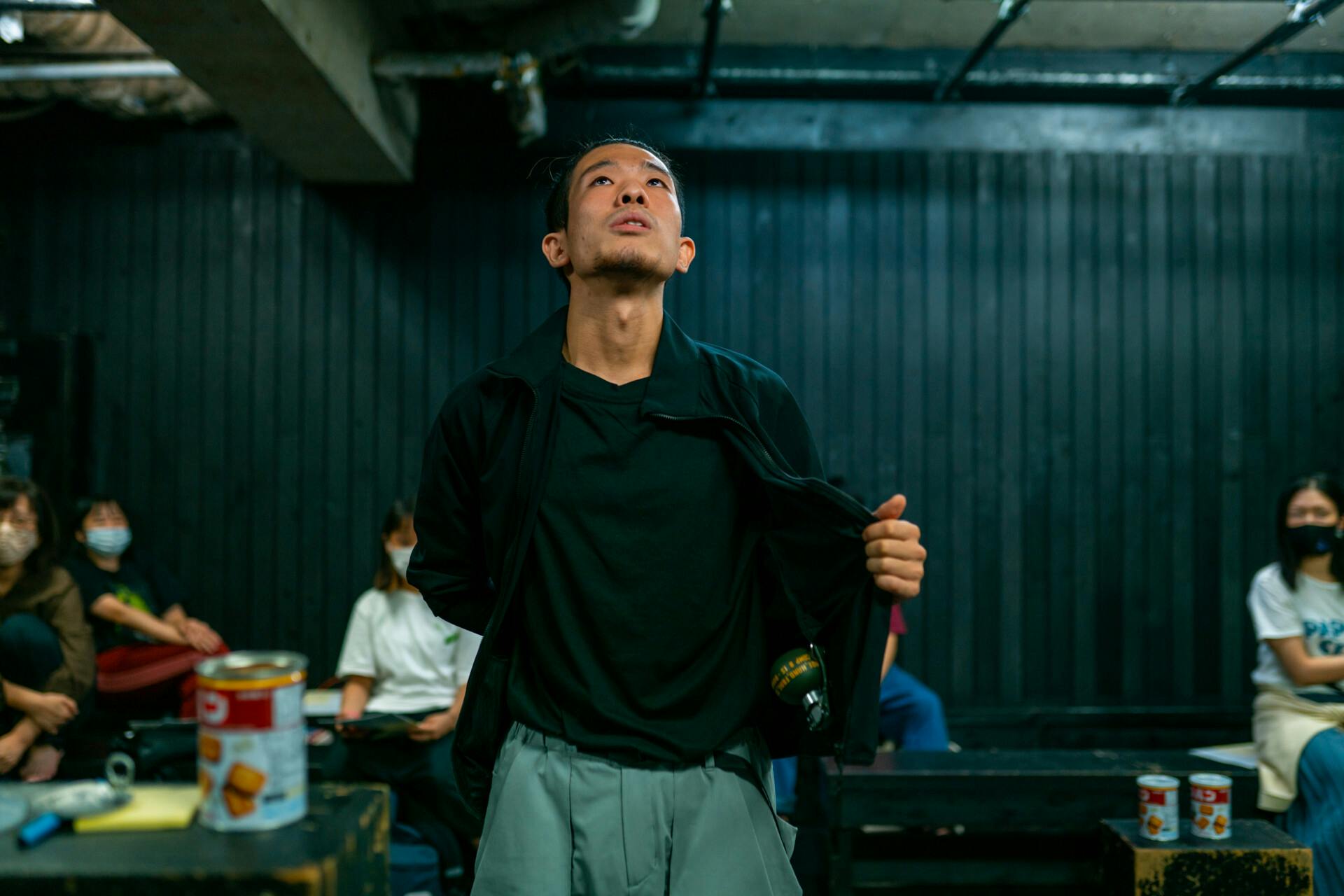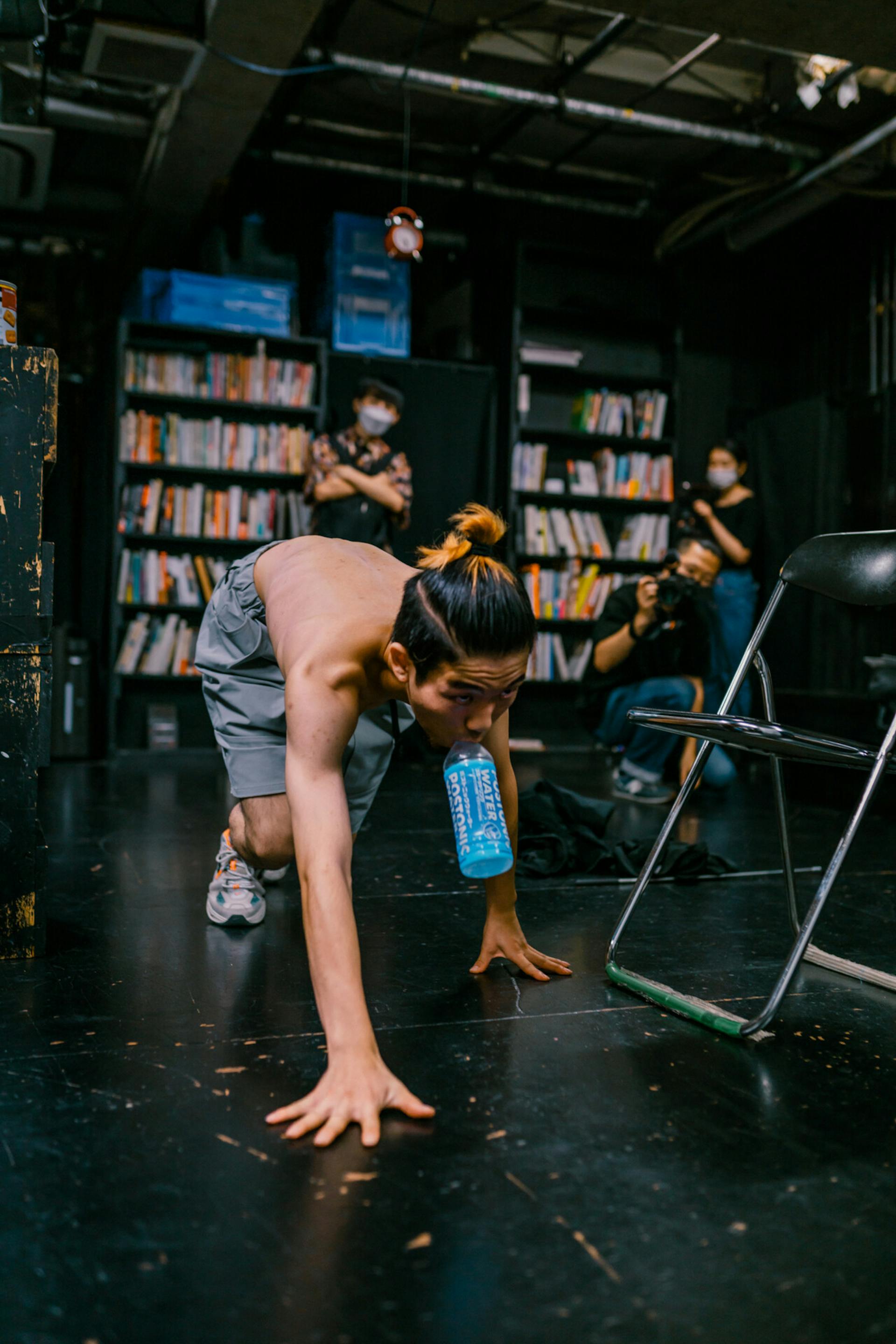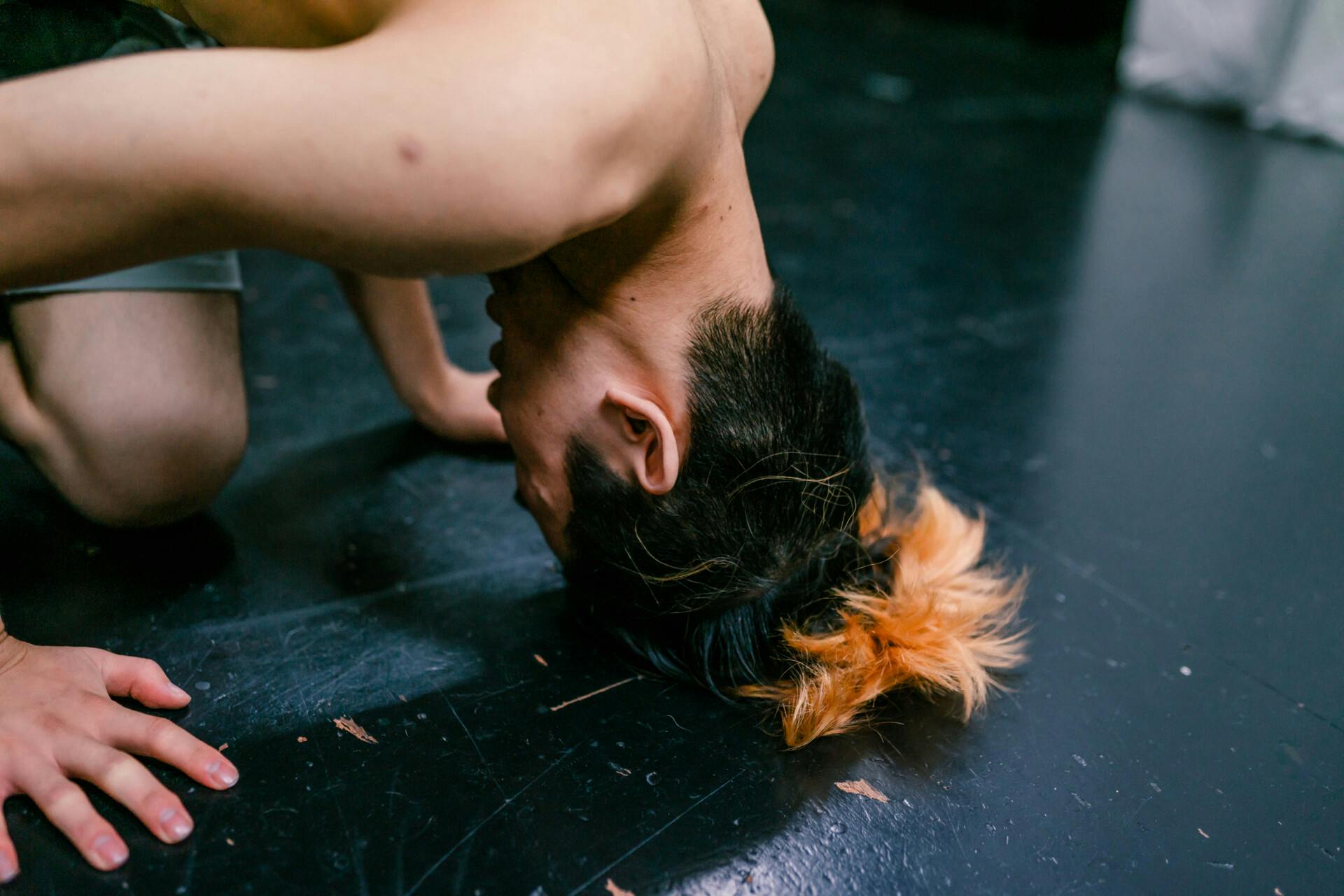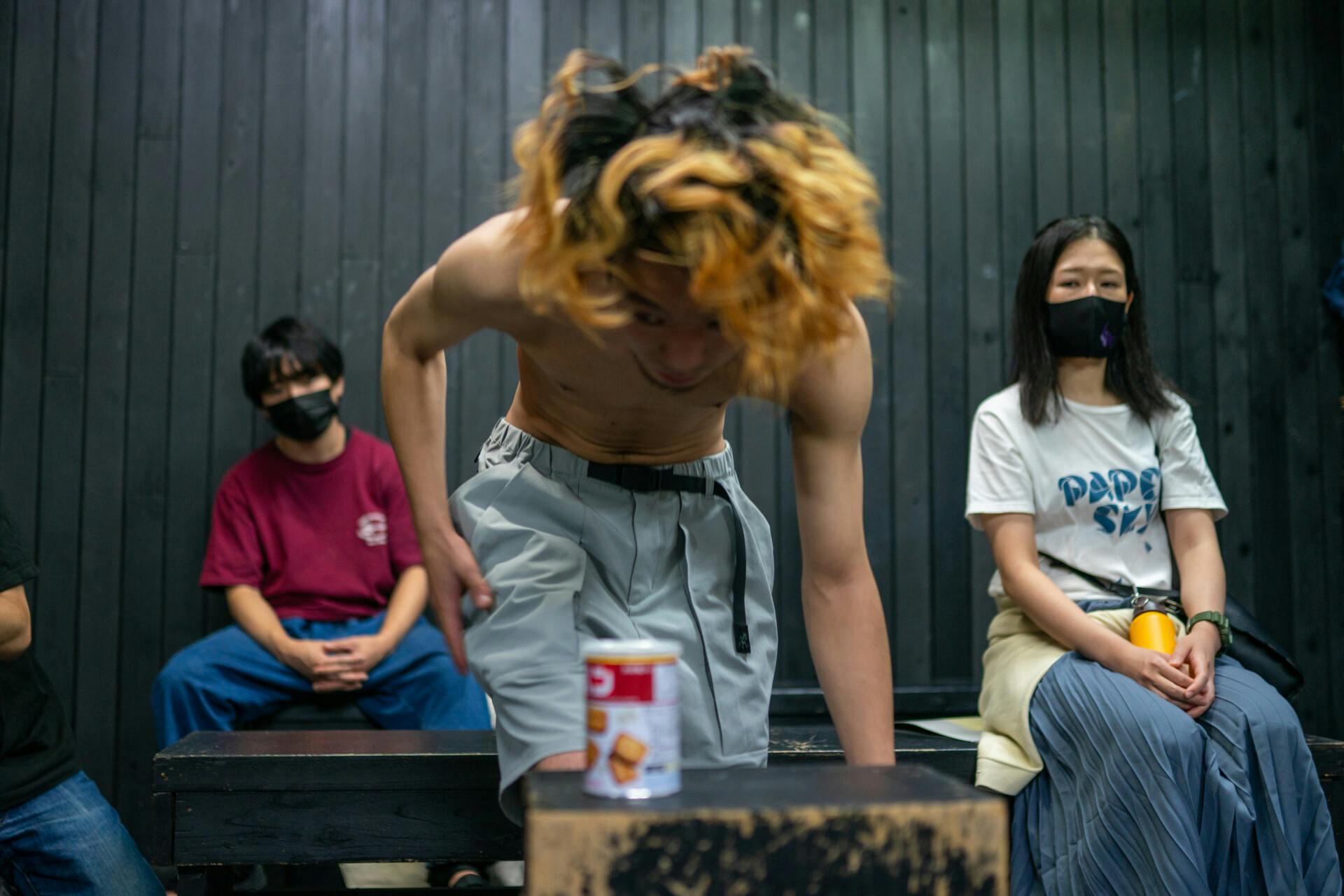The performance was half improvised within a few tools and a prearranged format. The performance began with a story about how he had not eaten or drank anything since his medical checkup the day before until the day of the performance. As he spoke, he started bowling with a bone gum (a dog treat made by soaking cow skin in milk and drying it) as the "ball" and a spudding as the "pin" and began a binding game in which he could drink if he knocked it over. Starving, I secretly eat a loaf of bread and some chili peppers mixed in it, so that no one will know I'm behind it. Before long, I became like a dog, and the training shifted to throwing a piece of bone gum in my mouth.
The format of the performance was intended to be based on mutual surveillance and unbalanced information sharing.
The audience was divided into left and right seats, and the performance appeared to be about different things at the same time. Because the seats were facing each other, the audience saw each other through the performers, so that if one audience member laughed, the other did not know why the other was laughing. The stress of not being able to see creates frustration in the audience and accentuates the audience's own constraints. Only when the viewer stands up from his or her seat to look at the work can he or she understand the entire content of the work. In response to this frontless event, do the viewers adopt the black box viewing rules? Or do they adopt white cube viewing rules?
